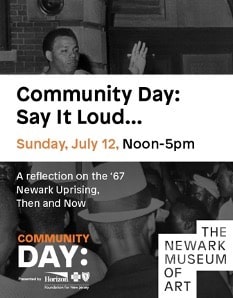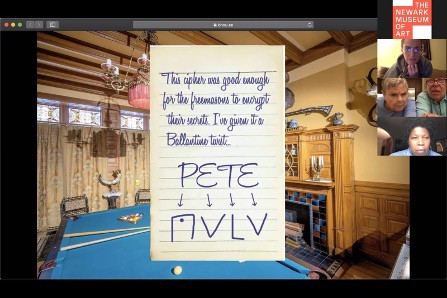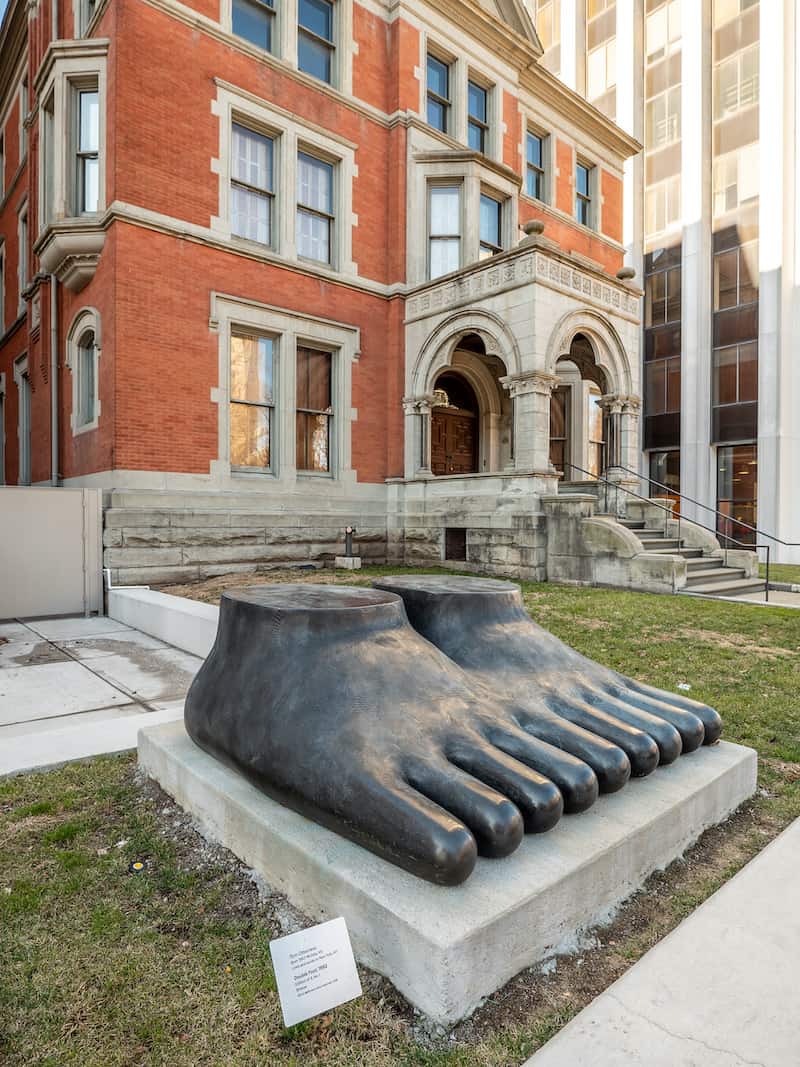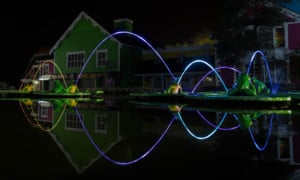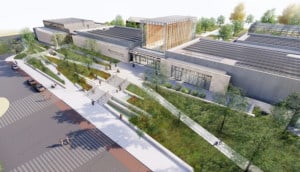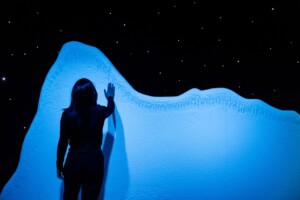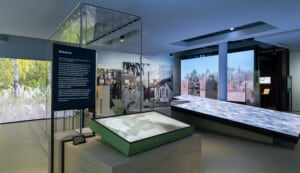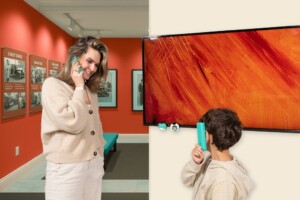Silvia Filippini Fantoni, PhD is Deputy Director of Learning & Engagement for The Newark Museum of Art. She spoke with blooloop about her career path, passion for data, and the changes underway for the Newark community.
Named one of the blooloop 50 Museum Influencers of 2020, Silvia Filippini Fantoni joined The Newark Museum of Art staff as Deputy Director of Learning & Engagement in October 2019. Fantoni is originally from northern Italy and worked in museums across Europe before moving to the US.
An award-winning scholar, guest lecturer, and author, Fantoni earned bachelor and master’s degrees in history, from Universita degli Studi di Milano in Milan. Her education continued at Universite Paris I-Sorbonne, with another master’s degree and PhD in Aesthetics and Art Sciences. During this time, she completed also internships with the Maastricht McLuhan Institute & European Centre for Digital Culture, the J. Paul Getty Museum, and the Louvre Museum.
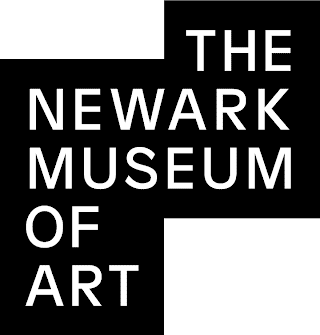
Fantoni started her career in museum-adjacent organizations, then as a Project Manager for the British Museum. When she came to the U.S. after earning her PhD, she served at the Indianapolis Museum of Art for 5 years. After that, she worked at the North Carolina Museum of Art for 2 years.
As the Director of Programs and Audience Engagement there, Fantoni led a sizable staff as well as wide-ranging research initiatives. Using this user data to drive decisions, her efforts focused on creating visitor-focused programming.
John Cotton Dana’s Legacy
In her short time at New Jersey’s largest museum, Fantoni has lent her talent to hundreds of virtual public programs. This programming became the catalyst for a bigger change to the infrastructure of the institution and the technologies it employs.
Founded in 1909 by librarian and innovator John Cotton Dana as the Newark Museum, the institution remains influential today. The museum boasts global art, science, and natural history collections, but ranks twelfth among North American art museums. This status led to a name change in 2019 to better reflect the prestige of its dominant collections.
Dana spent the last twenty years of his life both leading the Newark Public Library and the Museum. The collections were unique in their inclusion of American commercial products, crafts and artworks. Dana pioneered the model for modern libraries as community spaces—open, ergonomic and accessible to the public.
The beauty in everyday objects
He started the museum on the fourth floor of the library, and it moved to a dedicated building in the 1920s.
“John Cotton Dana collected art from every corner of the world before other museums, including African, Asian, and Native American art. But he also thought that design objects were very important to the story,” says Fantoni. “He saw the beauty and the interest in every object, even a regular teacup.”
Museums are rediscovering their roots and their connections with the community, not only thinking of themselves as academic organizations
“He collected these objects because he found the form, the shape, and its cultural meaning—the traditions it brings with it—fascinating.” Ultimately, Dana felt it was important to document the greatness of human creativity and ingenuity through the collection.
Fantoni says that Cotton built a museum of and for the community right from the start,112 years ago. And he was ahead of his time: “museums are rediscovering their roots and their connections with the community, not only thinking of themselves as academic organizations. That’s why this museum and its legacy is very important, not just for the city of Newark, but also for the history of museums in America.”
The New Newark Museum of Art
Now, The Newark Museum of Art is comprised of several buildings and outdoor spaces. The campus includes the historic 1885 Ballantine House and 1784 Schoolhouse, the Alice and Leonard Dreyfuss Planetarium, Alice Ransom Dreyfuss Memorial Garden, Billy Johnson Auditorium, the MakerSPACE, Newark Fire Museum, and the Victoria Hall of Science.
The eclectic grouping of nineteenth and twentieth-century buildings houses a wide-ranging collection of art and science exhibitions.
“It’s the combination that makes it so unique. I don’t think you can find any other museum like it in the United States,” says Fantoni. “There’s just so much intersection between history, art, and science that you can explore. It’s fantastic.”
The institution was known as the “Newark Museum” until 2020 when the results of a study precipitated its name change. The study revealed widespread confusion: People thought the museum was dedicated to the history of the city of Newark.
Something which hasn’t changed, however, is the responsiveness of the museum to the evolving interests and needs of the community. The institution remains steadfast in its commitment to enriching lives through engaging educational programs and artistic excellence.
As a not-for-profit entity, the museum receives funding in part from corporations, foundations, individuals, and state and local governments to aid its efforts. Over the past few years, as state funding faltered, the city stepped up its efforts. The museum can provide free admission for Newark residents because of the support receives from the city.
Deputy Director Fantoni
“I see museums as places where I can work with art, science and history to create interactive learning experiences without taking on the formal role of educator,” says Fantoni. Outside the museum, she also takes on that role. She teaches two graduate-level classes at her alma mater, I-Sorbonne, on using technology and data to inform museum experience development.
“Early on in my museum work, I went back to school,” she says. “I earned my master’s and PhD degrees in [the US equivalent of] museum studies. I studied the way technology could be used to make the museum experience more personalized for visitors.”
However, she felt that she could not write about or research museums without understanding them on a practical level. It was imperative to understand the subject from multiple angles for Fantoni, who dove into user research and data analysis.
Pandemic non-withstanding, daily interaction with visitors is a draw for her. “You can see immediately the impact which the kind of experiences you create has on individuals, groups, and families. Sometimes we reconnect with these people after a long time, and they remember their experience fondly.”
Novel change, big ideas
Fantoni is one of 5 deputy directors at The Newark Museum of Art who work under the director. The 5 departments cover finance and infrastructure, education and public engagement, external affairs and marketing, curatorial and exhibition, and conservation.
Under this structure, in 2019 the team developed a new and increasingly cross-functional approach to exhibition development. Fantoni describes the process as “bringing people from different departments together from the beginning.” And “We develop what we call a ‘big idea.’ It’s a document that summarizes in fifty words the key idea and take-aways for an exhibition.”
Shortly after she started this work at the museum, other big changes began happening. Like most museums were forced to during the pandemic, The Newark Museum of Art shut down in mid-March 2020. Then, a headcount reduction took the staff from twenty-eight to fifteen.
The Newark Museum of Art & COVID-19
The virus gripped the city of Newark; cases spiked again in late 2020, just as the Museum planned to reopen. It eventually reopened in June 2021. The longer-than-average hiatus Fantoni attributes to the severity of the virus’ impact, putting re-hiring and contingency processes in place, and an abundance of caution on the part of the museum.
“It takes time to reopen a museum,” she says. “And so, until we were sure there would be no further lockdown from the city, we decided we wouldn’t reopen.”
It takes time to reopen a museum…and so, until we were sure there would be no further lockdown from the city, we decided we wouldn’t reopen.
Precautions such as time ticketing, limited capacities, social distancing and temperature scans are now employed. Theatres and hands-on experiences will remain closed for the time being and even outdoor programs will employ a smaller cap.
Science, species, and stats
Over the last few decades, the ratio of art to science in the Museum’s galleries has reversed. Instead of looking at science topics as standalone subjects, exhibits will display the relationships between art and science.
The first exhibition to open in the redeveloped science space will focus on how artists and scientists examine endangered species. The exhibition combines artworks that depict these animals or addresses the issue, with scientific findings and specimens.
Museum staff plan to install an immersive experience in autumn, inspired by John James Audubon, in the space. They are also planning another participatory experience for the gallery, wherein patrons can pledge to help save endangered species.
The museum currently has several digital interactives; most are touchscreen-based and in need of updating. “I think museums are moving away from text-heavy [interactives] and so are we,” says Fantoni. We have redefined how we want a technology to support immersion, participation, and play above text content.”
A passion for data
Naturally, researched statistics support this new philosophy. The Newark Museum of Art collects vital information on attendance, attrition, event participation and associated fees, to name a few. Fantoni says her team performs tests frequently to discover what will work best to reach a bigger audience. “Data is my passion.”
In addition to looking at virtual engagement numbers, they send surveys to all who signed up. Because of this aggregation, the museum determined key facts such as donation-only events are more financially successful than ticketed ones.
Fantoni recently finished analyzing the survey data. “Our demographics in the first 3 months of the year compared to the whole period of last year are positive: diversity increased by twenty percent, and participants under age forty-five by thirty percent.”
Lockdown programming at the Newark Museum of Art
Within weeks of the first lockdown, The Newark Museum of Art launched its first virtual programs via Zoom. The staff have no intention of stopping—for good reason. In 9 months of virtual programming from April to December of 2020, the institution engaged with as many people as they had in-person visits in 2019.
The 194 audience-targeted online events the museum hosted in 2020 resulted in approximately 84,000 live-streaming social media engagements and more than 9,800 Zoom participants. Museum staff also conducted virtual tours for school groups.
“From November onward, we’ve had an additional 5,000 kids and educators that we’ve engaged between online field trips, residencies, virtual STEM fairs, and professional development opportunities [for educators],” says Fantoni.
She believes the fact the museum did not have existing digital programs was of benefit. “Museums are not the most agile organization on the planet.”
Exhibitions can take years to plan and execute. However, “In the absence of established infrastructure or identity as a virtual institution, we were able to pivot quickly.” Significant technology upgrades were part of her departmental 3-year plan, which became accelerated beginning with engagement and digital strategies.
Developing a new website and interactive experiences have come to the fore for Fantoni’s team. But, only after responding to the immediate need to engage visitors remotely. “I had come from a museum that had digital programs with a focus on schools,” she says. “So, we were able to quickly look at what the solutions were.”
Lessons learned; lessons shared
Given the freedom to, the learning and engagement team started by experimenting. Their first virtual event was “a disaster,” according to Fantoni. “We were ‘Zoom Bombed.’” Quick adaptation, analysis, and iteration then led to deeper structural changes and much-needed IT upgrades.
As the staff adjusted to WFH, efficiency increased and meeting space was democratized. “We learned a lot working remotely.” These benefits translated directly to the museum’s audiences.
Programming began with an academic speaker approach. However, the audience data, showed they skewed older and less diverse than the museum’s in-person visitorship. “So, we used that data to say, okay, we need the same interactivity-participation-play that we use in our programs in a physical space in the virtual world.”
The resulting events ranged from art trivia to social justice to a murder mystery. Virtual programs included: Say It Loud, Pride Community Day, Art Olympics, and Escape from the Ballantine House.
Developed with grant funding, Escape from the Ballantine House is a virtual escape-room game set in a Victorian-era home. Groups work together to crack puzzles—and the game is now a source of income, too. Companies pay US$250 to $1,000 to have work groups hosted for the experience.
The strategy has worked; the participants are now younger and more diverse. “We were able to actually successfully engage people virtually.” Ultimately, this raises questions about the role that objects play versus experiences and programming.
Always people first
Fantoni says her personal philosophy is very simple: people first. “As much as I love and am interested in objects, I’m more interested in the people behind them.” She believes museums need to embrace a change in thinking along the same lines. “Museums [generally] are very much about objects first, and we have to really embrace that shift.”
She makes a point of stating that the institution is committed to becoming a “museum of the community again.” That translates to bringing experiences out into the community, “not expecting people to only come to us.”
The future of Newark Museum of Art
Fantoni finds Newark’s evolution, even amid the pandemic heartening. “This city was plagued with a bad reputation for a long time but is having a small Renaissance right now. It’s an exciting time to be here and be part of such a proud and diverse community.” She’s enthusiastic to see the art and food scenes growing—and says she hopes that gentrification doesn’t threaten the city’s diversity.
She’s also quick to say she feels the opportunity to get to know the surrounding community is a unique privilege. “It’s been a learning curve for me, but a rewarding one, especially in our focus on diversity and inclusion.” Difficult conversations were a part of that process; she credits the museum team with creating an open and supportive environment.
“I’ve never found a museum environment as conducive to collaboration and change as the one I currently work in. And that’s due to the combination of great leadership, great colleagues and a great community,” Fantoni says.





